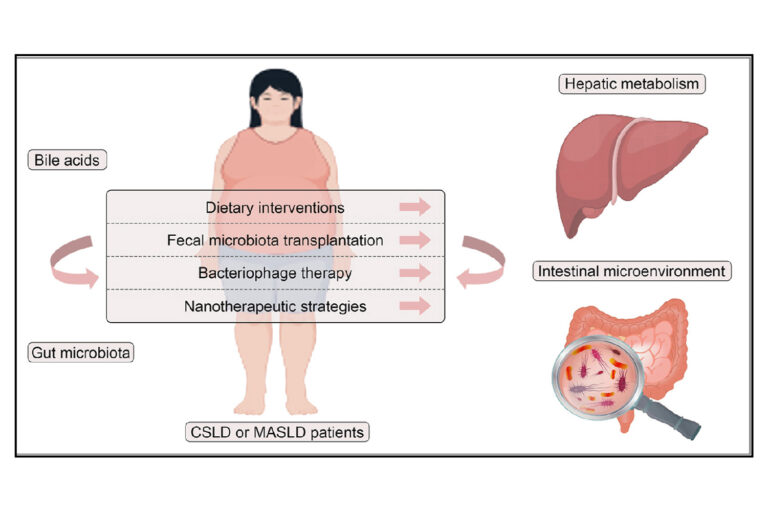How Gut Microbes and Bile Acids Work Together in Liver Disease
by Anna Sandhu | Jul 22, 2025
Reviewed by Dr. Arun, M.Pharm., PGDRA, Ph.D.

This article looks at two related liver problems:
- One is types of liver disease where bile doesn’t flow properly called cholestatic liver disease.
- The other is liver disease tied to bad metabolism, fat build-up and other issues called metabolic dysfunction-associated steatotic liver disease (MASLD).
The authors explore how the tiny microbes in our gut bile acids work together in what they call the “gut microbiota-bile acid axis.” They ask: Can we use this axis (that link) as a target for new treatments for these liver diseases?
How the gut, bile acids & liver are connected
- Normally, the liver makes bile acids and sends bile into the intestines; the gut microbes help change bile acids; and bile acids and gut microbes help keep each other balanced.
- When bile flow is blocked (cholestasis) or metabolism is disturbed (in MASLD), this balance gets broken. The gut microbes change in number or type (called dysbiosis) and bile acid profiles go off track.
- This broken link means the liver gets more damaged: more inflammation, fatter build-up, more fibrosis. So, the “gut-liver” conversation via bile acids and microbes is very important.
What the research found / Key points
- In cholestatic liver disease, bile acids accumulate because flow is blocked; gut microbes become unbalanced; intestinal barrier weakens; harmful substances can reach the liver and worsen damage.
- In MASLD, similar disruptions occur: fat build-up, metabolic issues, plus the gut microbiota-bile acid axis is disturbed too.
- Because this axis is important, researchers are exploring treatments that:
- Change the gut microbiota (via diet, probiotics, antibiotics, fecal microbiota transplant)
- Target bile acid receptors (like FXR) to change how bile acids work and reduce damage
Key Take-aways
- The gut microbiota-bile acid axis is a key link between the gut and liver.
- When the axis is broken (microbes unbalanced, bile acids messed up), liver diseases like cholestasis and MASLD get worse.
- Treatment strategies are shifting: instead of just treating the liver, we can aim at the gut + bile acid system.
- Possible strategies include improving gut microbes, strengthening the gut barrier, modulating bile acid signalling (e.g., via FXR).
Final Thoughts
Our gut and liver are tightly connected, and bile acids plus microbes form an “axis” that influences liver health in big ways. For people with serious liver diseases where bile flow is bad or metabolism is off targeting this axis could offer new hope. While the treatments are not yet routine, simple steps such as supporting gut health avoiding extreme gut disruption, and keeping liver-friendly habits may help.
More Information Targeting the gut microbiota-bile acid axis: Therapeutic strategies for cholestatic liver disease and metabolic dysfunction-associated steatotic liver disease DOI: https://doi.org/10.1016/j.engmed.2025.100088
